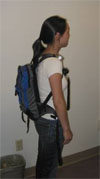Fix Site Monitoring

In each area of our study, air pollution monitoring equipment has been set up to measure air quality. Study technicians, with assistance from the MESA Air Exposure Center and the Environmental Protection Agency, worked with the local agencies to position the new fixed site monitors in locations that meet study monitoring requirements. Once in place, these monitors will generally not move for the life of the project. Study technicians are periodically visiting each of the fixed site monitors to remove and replace sampling devices, as well as check and perform appropriate maintenance to the monitoring equipment.
These fixed sites will operate for ~ 18 months. Some fixed sites, including the collocation sites, will be operated throughout the entire study period, to capture ongoing temporal and spatial variation. If our analyses indicate that another MESA Air-deployed fixed site would provide substantial information not obtained from other fixed sites, we may continue this monitoring throughout the study period.
Community Co-Pollutant Monitoring

The Community Co-Pollutant Monitoring does not require participant interaction. This sampling campaign is being completed to estimate the variability of air pollution levels across the expanse of the study areas. The sampling campaign will require coordination with local utility companies or other local agencies to obtain permission to hang the small air sampler. The monitoring campaigns will take place three times over the first three years of the project, twice in the season when regional air pollution concentrations are high and once when concentrations are low. Sampling will last for two weeks.
Home Outdoor Monitoring

Home outdoor measurements will be collected twice at up to 900 residences in the nine monitored areas. Up to 100 homes in each of the 9 communities will be monitored in two-week monitoring sessions. Each of these homes will be monitored over two different seasons.
Study participants will be asked when they come in for a clinic visit if they would be willing to also participate in air sampling. Within 18 months of entering the study, the study technicians will contact willing participants by telephone to establish a time frame for the two-week monitoring.
The participants will be asked to allow a study technician to set up monitoring equipment outside their residence. The equipment will continuously collect air samples for the entire two weeks. There is no need for any participant involvement with the sampling equipment, unless the equipment stops functioning. If that occurs, the participant will be asked to contact the study technician and the technician will come to the participant’s home to make necessary repairs.
Assuming the equipment functions normally, a study technician will return to the participant’s home after two weeks and collect the equipment. Permission for this equipment retrieval will be obtained via telephone at least 24 hours prior to pickup.
Home Indoor Monitoring

Some participants will be asked to allow a study technician to set up monitoring equipment inside and outside their residence, for a two-week period. The purpose of this testing is to see how much outside air pollution gets into the participant’s house or apartment. The equipment will be set up by the technicians and will collect air samples for the entire two weeks. There is no need for any participant involvement with the sampling equipment.
The indoor stand will be placed in the part of the home where the participant spends the most time. The outdoor stand will be set up close to their residence, in an area that is as convenient as possible, and leaves the equipment safe. After two weeks, a study technician will return to the participant’s home and remove the equipment. Sampling will be done twice over approximately 18 months.
The monitoring equipment stand is about five (5) feet tall, and takes up about four (4) square feet. The equipment is plugged into an electrical outlet. If no outdoor electrical outlet is available, it may be necessary to use an extension cord and an indoor outlet.
The equipment makes a low humming noise when operating. If the humming of a long noise stops, the participant will be asked to call their local clinic to report this problem. A study technician will come out to the home to check out the equipment.
Personal Sampling

A small number of participants will be asked to complete “personal” air monitoring for a two-week period. The monitoring involves carrying a small amount of equipment around that will collect air samples from the area close to the shoulders and head (the “breathing zone”). The equipment includes a small pump attached by a thin tube to a filter, and a small clip-on badge. The combined weight of all of the equipment is less than five pounds. The pump can be carried in small backpack or fanny pack, but the filter and badge must be attached to outer garments (shirt or jackets) near the shoulder. The personal monitoring equipment must be kept with the participant for the entire two-week period, although the equipment can be set down when the participant is sitting or lying down.
Study technicians will deliver the monitoring equipment to the participant’s home and will demonstrate how to carry or attach the equipment, and answer any additional questions. Then the technician will return every other day, to replace the battery in the pump, and make sure all the equipment is operating correctly. During their daily visit, the technician will collect information about participant’s activities the previous day, including questions about cooking, smoking, heating or cooling their home, and where they may have traveled outside of your home. At the end of the two-week period, the technicians will make a final visit to pick up all the equipment.